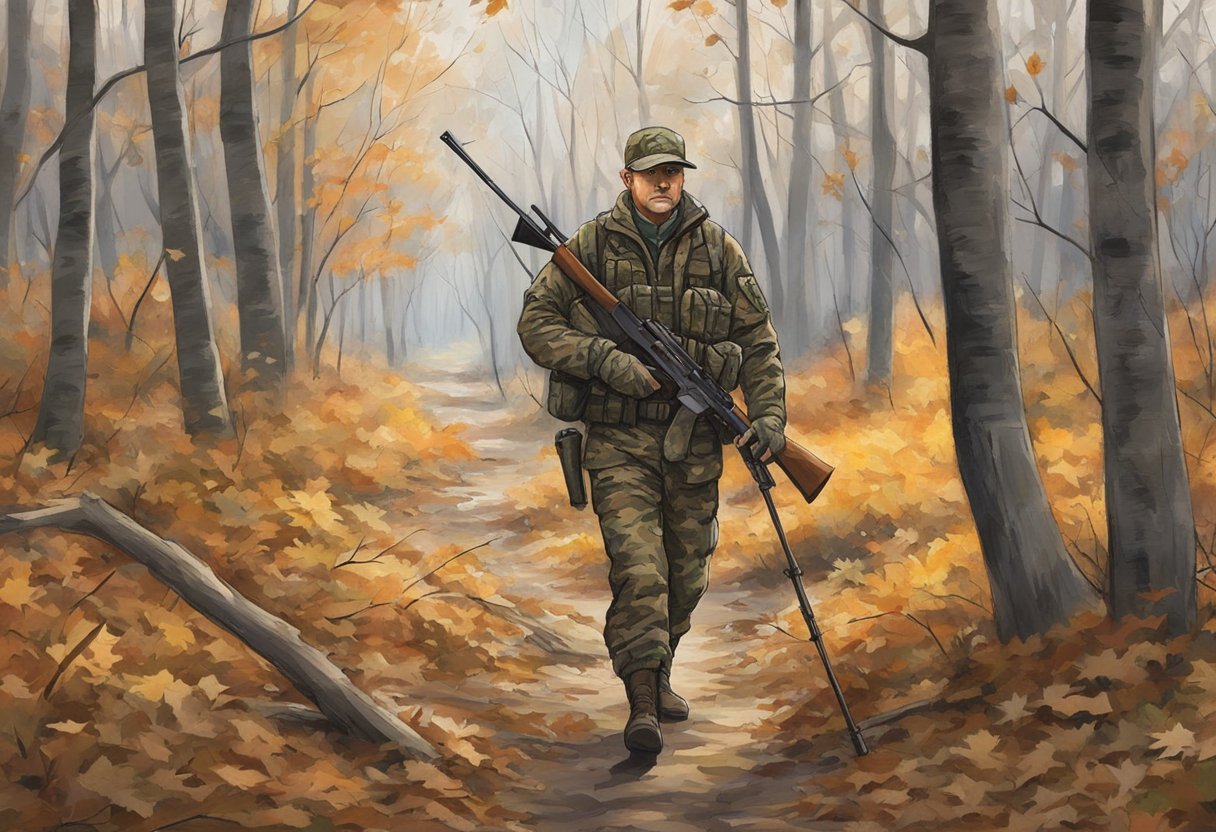Your Guide to Hunting in Ohio
Essential Tips and Regulations
This Article is Part of Our Hunting Guide for All 50 US-States
Ohio, known as the Buckeye State, offers a diverse range of hunting opportunities for beginners and experienced hunters alike. With its abundant wildlife and varied terrain, Ohio's hunting scene is sure to captivate any budding enthusiast. This article will guide beginners through the ins and outs of hunting in Ohio and offer tips for those looking to embark on their first hunting adventure.
Being a beginner hunter in Ohio entails understanding the state's hunting regulations, obtaining the appropriate hunting license, and familiarizing oneself with the different species available for hunting. The Ohio Department of Natural Resources (ODNR) regulates hunting and provides valuable resources and information for hunters looking to start their journey in this historic American pastime.
Within the state, there is an array of habitats that host a variety of species, such as deer, wild turkey, waterfowl, and small game like squirrels and rabbits. Each type of animal requires different hunting techniques, equipment, and knowledge. Therefore, it is crucial for beginner hunters to target a specific species to hone their skills and develop a better understanding of Ohio's vast hunting opportunities.
Understanding Ohio Hunting Regulations
Ohio Department of Natural Resources
The Ohio Department of Natural Resources (ODNR) is responsible for managing wildlife and setting hunting regulations within the state. It is essential for hunters to familiarize themselves with these regulations to ensure a safe and enjoyable hunting experience while also adhering to the laws designed to protect wildlife populations and maintain a balanced ecosystem.
Hunting License Requirements
In Ohio, all individuals are required to obtain a hunting license before participating in hunting activities. However, there are some exemptions for specific categories of hunters, such as:
Landowners hunting on their land
Tenants hunting on land where they reside and engage in agricultural work
Military personnel on furlough or leave
The following is the basic structure of Ohio hunting licenses:
License Type Age Group Requirements Youth License Under 18 Hunter Education Course Adult License 18-65 Hunter Education Course for first-time hunters Senior License 66 and over Age Proof and Resident Status
Resident Vs. Non-Resident Permits
Both residents and non-residents are allowed to hunt in Ohio, but different permits are required for each category. A resident is someone who has lived in Ohio for at least six months before applying for a license. Non-residents must purchase a non-resident hunting license and may need additional permits, depending on the game species they intend to hunt.
CWD Regulations and Disease Management
The ODNR closely monitors and regulates hunting to manage and prevent the spread of Chronic Wasting Disease (CWD) in Ohio's deer population. CWD is a neurological disease that affects deer, elk, and other cervids, causing weight loss, abnormal behavior, and eventually death.
To prevent the spread of CWD, Ohio has established Disease Surveillance Areas (DSA) where additional regulations apply, such as:
Mandatory submission of harvested deer for CWD testing.
No feeding of deer, with some exceptions for agricultural activities.
No removal of deer carcasses from the DSA unless they meet specific requirements.
Hunters must follow these regulations and stay informed about any changes in CWD management strategies or additional DSAs as part of their responsibility to protect and preserve Ohio's wildlife.
Key Ohio Hunting Seasons
Deer Archery Season
Deer Archery Season in Ohio typically begins in late September and ends in early February. Hunters can take advantage of a long season that offers excellent opportunities to hunt both whitetail deer and wild turkey. During this time, archers can use longbows, recurve bows, and compound bows, as well as crossbows. Ohio's Division of Wildlife carefully manages deer populations for a sustainable and enjoyable archery season.
Gun Season and Deer Gun Season
In Ohio, Gun Season generally falls in late November through early December. During this time, hunters can use only specific firearms: shotguns with a slug, handguns with straight-wall cartridges, and muzzleloading rifles. Deer Gun Season is highly anticipated by hunters seeking to harvest a larger trophy buck and helps maintain healthy deer populations in the state. The Division of Wildlife enforces restrictions on hunting hours, bag limits, and equipment to ensure a safe and successful gun season.
Youth and Senior Hunting Opportunities
Ohio provides opportunities for youth and senior hunters through separate hunting seasons. The Youth Deer Gun Season occurs in mid-November, granting young hunters the chance to hunt deer using a shotgun, straight-walled cartridge rifles, and muzzleloaders. Participants must be between the ages of 12 and 17, and accompanied by a non-hunting adult.
Senior Hunting Opportunities are available during a special controlled hunt for seniors aged 65 or older. These hunts take place on select Ohio state parks and wildlife areas. Participants must apply in advance and be drawn in a lottery for a hunting permit.
Muzzleloader and Deer Muzzleloader Season
Muzzleloader Season typically starts after the regular gun season and is a favorite among hunters who desire a traditional hunting experience. It offers dedicated time for those skilled in using primitive firearms like flintlock and percussion cap rifles. Specific dates and information on legal muzzleloading firearms can be found on the Ohio Division of Wildlife's website.
During Deer Muzzleloader Season, which usually occurs in early January, hunters can pursue deer with muzzleloading shotguns and rifles. As with other deer seasons, hunters should carefully review regulations, restrictions, and hours for hunting deer with muzzleloaders in Ohio.


